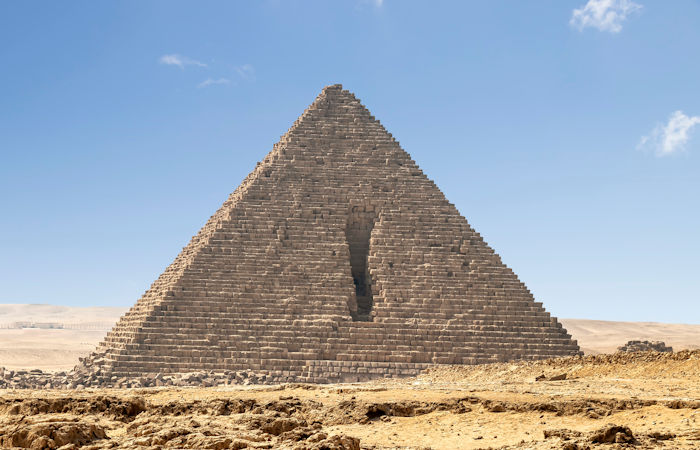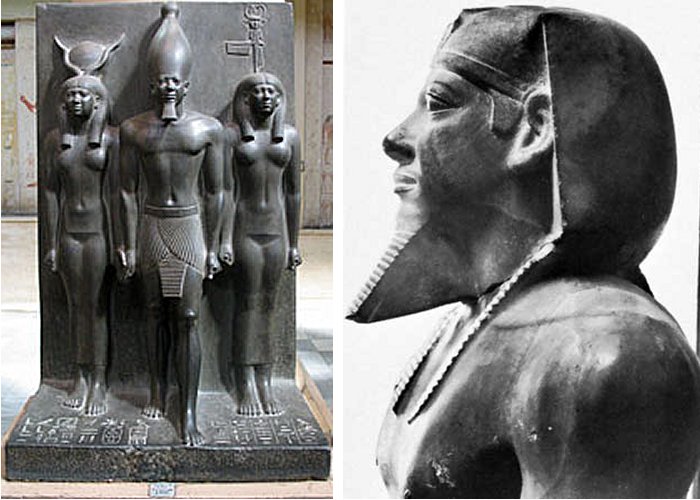Mysterious Pyramid Of Menkaure Remains An Ancient Puzzle
Ellen Lloyd - AncientPages.com - Pyramids are frighteningly anonymous structures.
Pharaohs built huge and well-constructed pyramids, tombs, and temples to glorify themselves and to be remembered after death, but their bodies were never inside these structures.
The Pyramid of Menkaure is the smallest of the three main Pyramids of Giza, located on the Giza Plateau in the southwestern outskirts of Cairo, Egypt. Credit: Adobe Stock - Alfredo
In none of them the bodies of builders or rulers were found, and when they were occasionally found, it turned out to be "very young" and had no connection to Egypt's ancient times.
The Old Kingdom stone pyramids were never actually ‘real’ tombs. The 19th-century so-called 'tomb theory' was only invented to replace earlier theories suggesting the pyramids as storehouses for grain or repositories of sacred measurements of the planet.
So for what purpose were these impressive gigantic structures built?
In fact, no one, even Sir William Flinders Petrie, the earliest authority on the pyramids of Giza, had any idea about it.
Isn't it strange that 'tens of millions of stone blocks used in Egypt’s large pyramids construction, from Meidum in the south to Abu Rawash in the north, and in no place is the name of their builders inscribed, except for a single quarry mark of red ochre paint in the Great Pyramid,' (Malkowski, Ancient Egypt 39,000 BC).
Left: Menkaure with Hathor on his right, and nome figure on his left; Right: Menkaure, detail of an alabaster statue from Giza; in the Egyptian Museum, Cairo Courtesy of the Egyptian Museum, Cairo; photograph, Hirmer Fotoarchiv, Munich
This single quarry mark 'was possibly forged by Richard Howard-Vyse under the pressure of competition with another archaeologist, the Italian Count Caviglia.'
Despite the claim that the pyramid was a tomb, several Egyptologists do recognize that the intent of the pyramid still remains a mystery.
Mysterious Pyramid of Menkaure
The 4,300-year-old pyramid of Menkaure, the smallest of the famous trio at Giza (some 200 feet lower than the other two), is now open to the public after the completion of its renovation.
The pyramid of Menkaure (Mycerinus) measures 356 feet (108 meters) along each side and some 215 feet (65 meters) in height and an angle of 51 degrees. It was built to serve as the tomb of the fourth dynasty Pharaoh Menkaure (2530 BC.-2500 BC.)
This pyramid is also very anonymous. We do not know much about Menkaure.
Researchers discovered an empty basalt sarcophagus, an anthropoid coffin lid made of wood, and some bones. These bones, along with the coffin, were later proved to be dated from the early Christian era and had no connection to Pharaonic times.
On the other hand, the basalt sarcophagus could have belonged to Menkaure.
Unfortunately, nobody had the opportunity to examine it because it had been lost at sea when the ship on which Vyse sent it to England had sunk off the coast of Spain.
Since it was a matter of record that the sarcophagus had been found empty by Vyse, it was once again assumed tomb robbers must have removed the pharaoh's body.'
This 'robbery theory' was only supported by 'evidence' of the missing mummies and grave goods.
The lack of bodies in the pyramids and the absence of decorations and inscriptions in countless galleries, chambers, corridors, and passageways are also evident.
The same is true regarding all three Giza pyramids. Not a single word - praising the pharaohs - has been inscribed on the pyramids' walls.
Other burial places of ancient Egypt have beautiful decorations, paintings, and inscriptions referring to the ritual spells and invocations indispensable for the deceased on his journey toward eternal life.
Nothing like that can be found in Giza's trio, and that's because these pyramids were not built to serve as tombs at all.
The sixth ruler of the 4th dynasty, Menkaure, built himself a pyramid one-tenth the size of Khafre's. And unlike the other Great Pyramids, whose walls were made of limestone, Menkaure's pyramid was covered with granite on the bottom levels and in the burial chamber—a costlier, more difficult stone to work with.
Menkaure died unexpectedly, and work on his pyramid complex was abandoned. Later, Menkaure's heir, Shepseskaf, the sixth and last pharaoh of the 4th dynasty of Egypt during the Old Kingdom, later completed the complex using mud brick.
"Menkaure’s son and successor, Shepseskaf, used mud brick to complete the Mortuary and Valley Temples, all of the subsidiary pyramid temples, the Causeway, and probably the Enclosure Wall. A stele found in eight pieces in the portico of Menkaure’s Mortuary Temple reads:
“Under the Majesty of the King of Upper and Lower Egypt, Shepseskaf, the Horus, Shepsesy-khet, in the year after the first census of the large and small cattle, he made it as his monument for his father, the King of Upper and Lower Egypt [Menkauwra].” 1
Updated on March 5, 2024
Written by Ellen Lloyd – AncientPages.com
Copyright © AncientPages.com All rights reserved. This material may not be published, broadcast, rewritten or redistributed in whole or part without the express written permission of AncientPages.com
Expand for referencesReferences:
- Rigano, Ch. Pyramids of the Giza Plateau
Metropolitan Museum of Art, Egyptian Art in the Age of the Pyramids
A. Sutherland - Pharaoh Menkaure – Egyptian Ruler Who Tried To Outsmart Fate - AncientPages.com
More From Ancient Pages
-
 Extraordinary Gold Pendant With Cross Re-Writes Anglo-Saxon History – It’s One Of The Oldest Symbols Of Christianity Ever Found In East Anglia
Archaeology | Dec 11, 2017
Extraordinary Gold Pendant With Cross Re-Writes Anglo-Saxon History – It’s One Of The Oldest Symbols Of Christianity Ever Found In East Anglia
Archaeology | Dec 11, 2017 -
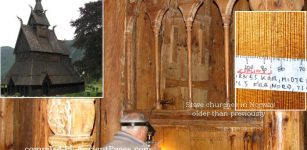 Medieval Wooden Stave Churches In Norway Are Older Than Previously Believed
Archaeology | Nov 8, 2019
Medieval Wooden Stave Churches In Norway Are Older Than Previously Believed
Archaeology | Nov 8, 2019 -
 Evolution Mystery – Mini-Proteins In Human Organs Appeared ‘From Nowhere’
Human Beginnings | Feb 20, 2023
Evolution Mystery – Mini-Proteins In Human Organs Appeared ‘From Nowhere’
Human Beginnings | Feb 20, 2023 -
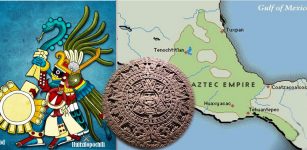 Why The Aztecs Called Themselves ‘Mexica’
Ancient History Facts | Jan 13, 2018
Why The Aztecs Called Themselves ‘Mexica’
Ancient History Facts | Jan 13, 2018 -
 Amaru (Katari) – Powerful Inca God Who Controlled Weather Phenomena
Featured Stories | Apr 9, 2024
Amaru (Katari) – Powerful Inca God Who Controlled Weather Phenomena
Featured Stories | Apr 9, 2024 -
 Remains Of A 2,200-Year-Old Roman Fountain Discovered In Assos, Turkey
Archaeology | Aug 17, 2022
Remains Of A 2,200-Year-Old Roman Fountain Discovered In Assos, Turkey
Archaeology | Aug 17, 2022 -
 Oldest Evidence Of Beer Comes From Raqefet Cave, Dating Back To 11,000 B.C.
Archaeology | Sep 27, 2024
Oldest Evidence Of Beer Comes From Raqefet Cave, Dating Back To 11,000 B.C.
Archaeology | Sep 27, 2024 -
 Soyal: Hopi Indians’ Winter Solstice Celebration And Arrival Of Katchinas
Ancient Traditions And Customs | Mar 29, 2019
Soyal: Hopi Indians’ Winter Solstice Celebration And Arrival Of Katchinas
Ancient Traditions And Customs | Mar 29, 2019 -
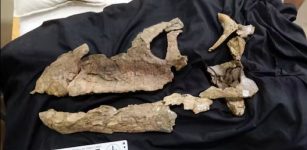 First Near-Complete Sauropod Dinosaur Skull Found In Australia Hints At Ancient Links Between Continents
Featured Stories | Apr 13, 2023
First Near-Complete Sauropod Dinosaur Skull Found In Australia Hints At Ancient Links Between Continents
Featured Stories | Apr 13, 2023 -
 Deception And Hidden Truth – Ancient Struggle Of The Eagle And Serpent – Part 2
Ancient Mysteries | Sep 6, 2019
Deception And Hidden Truth – Ancient Struggle Of The Eagle And Serpent – Part 2
Ancient Mysteries | Sep 6, 2019 -
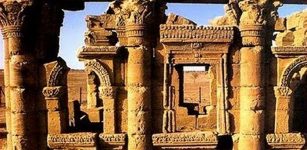 Ancient Great City Of Napata In The Kingdom Of Kush
Civilizations | Dec 30, 2015
Ancient Great City Of Napata In The Kingdom Of Kush
Civilizations | Dec 30, 2015 -
 Unexpected Historical Discovery: Remains Of Famous Sami Woman Recovered
Archaeology | Aug 22, 2022
Unexpected Historical Discovery: Remains Of Famous Sami Woman Recovered
Archaeology | Aug 22, 2022 -
 On This Day In History: The Name Of America Used For The First Time On World Map – On Apr 25, 1507
News | Apr 25, 2016
On This Day In History: The Name Of America Used For The First Time On World Map – On Apr 25, 1507
News | Apr 25, 2016 -
 Mystery Of The Bloody Island Poveglia – A Place Of Hell In Ancient And Modern Times
Featured Stories | Jan 21, 2016
Mystery Of The Bloody Island Poveglia – A Place Of Hell In Ancient And Modern Times
Featured Stories | Jan 21, 2016 -
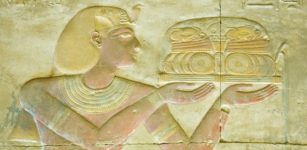 Table Manners And First Code Of Correct Behavior Were Introduced In Egypt 2,500 B.C. By Ptahhotep
Ancient History Facts | Oct 26, 2020
Table Manners And First Code Of Correct Behavior Were Introduced In Egypt 2,500 B.C. By Ptahhotep
Ancient History Facts | Oct 26, 2020 -
 Surprisingly Complex History Of Crocodiles – New Study
Evolution | Nov 23, 2023
Surprisingly Complex History Of Crocodiles – New Study
Evolution | Nov 23, 2023 -
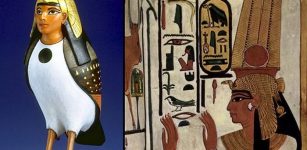 Why Were Ba And Ka Powerful Elements Of Soul In Ancient Egyptian Beliefs?
Egyptian Mythology | Apr 21, 2020
Why Were Ba And Ka Powerful Elements Of Soul In Ancient Egyptian Beliefs?
Egyptian Mythology | Apr 21, 2020 -
 Mysterious Fontainebleau Forest – Home To A Lost Civilization
Civilizations | Jun 23, 2020
Mysterious Fontainebleau Forest – Home To A Lost Civilization
Civilizations | Jun 23, 2020 -
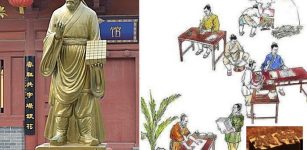 Chinese Invention: World’s First Known Movable Type Printing
Ancient History Facts | Dec 30, 2014
Chinese Invention: World’s First Known Movable Type Printing
Ancient History Facts | Dec 30, 2014 -
 95% Of All Modern Europeans Descended From The Seven Daughters Of Eve
Civilizations | Dec 12, 2019
95% Of All Modern Europeans Descended From The Seven Daughters Of Eve
Civilizations | Dec 12, 2019

